Space
Sign up for our newsletter
We summarize the week's scientific breakthroughs every Thursday.
-
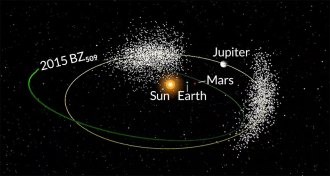 Astronomy
AstronomyAsteroid in Jupiter’s orbit goes its own way
Asteroid shares Jupiter’s orbit around the sun but travels in the opposite direction as the planet.
-
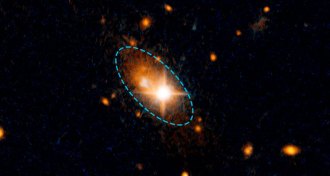 Astronomy
AstronomySupermassive black hole gets kicked to the galactic curb
Gravitational waves may have given a supermassive black hole a big kick, with enough energy to send it flying toward the edges of its host galaxy.
-
 Planetary Science
Planetary ScienceIt’s time to redefine what qualifies as a planet, scientists propose
Astronomers can have their definition of a planet, but some planetary scientists plan to stick to the long-held meaning of the word.
-
 Planetary Science
Planetary ScienceHow Pluto’s haze could explain its red spots
Pluto’s collapsing atmosphere may explain the dwarf planet’s seemingly random ruddy spots.
-
 Astronomy
AstronomyClose pass by sun didn’t radically alter comet 67P’s landscape
Landslides on comet 67P shot plumes of dust into space, but changes like these might not radically alter the landscape of the comet.
-
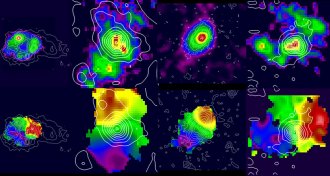 Astronomy
AstronomyDistant galaxies lack dark matter, study suggests
Slower-than-expected velocities of stars in distant galaxies, if confirmed, could reshape astronomers’ ideas of galaxy formation and evolution.
-
 Astronomy
AstronomyIn new Cassini portraits, Saturn’s moon Pan looks like pasta
Photographs taken this week by NASA’s Cassini spacecraft provide a closer view of Saturn’s small moon Pan, which resembles ravioli.
-
 Astronomy
AstronomySaturn’s moon Pan looks like ravioli
Photographs taken this week by NASA’s Cassini spacecraft provide a closer view of Saturn’s small moon Pan, which resembles ravioli.
-
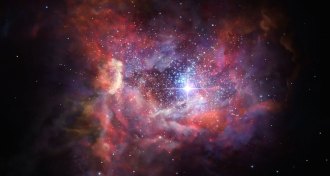 Astronomy
AstronomyAstronomers detect oldest known stardust in distant galaxy
The first stardust ever generated in the universe may have been spotted in a distant galaxy, seen as it was 600 million years after the Big Bang.
-
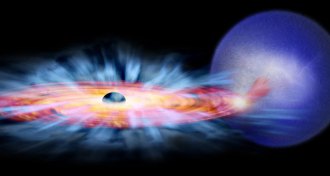 Astronomy
AstronomyMagnetism helps black holes blow off gas
The turbulent winds that swirl around black holes are probably driven by magnetic fields, scientists say.
-
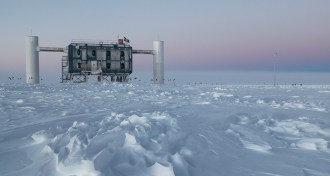 Particle Physics
Particle PhysicsRare triplet of high-energy neutrinos detected from an unknown source
The IceCube Neutrino Observatory spotted three neutrinos within 100 seconds that seem to have come from the same place in the sky.
-
 Particle Physics
Particle PhysicsTriplet of high-energy neutrinos detected from unknown source
The IceCube Neutrino Observatory spotted three neutrinos within 100 seconds that seem to have come from the same place in the sky.